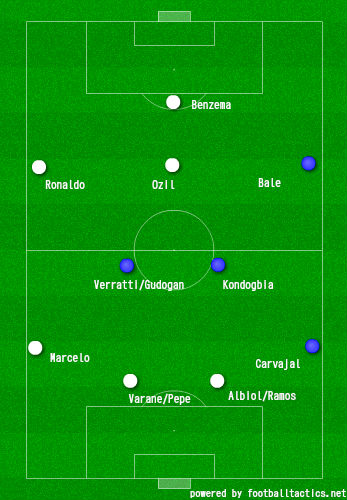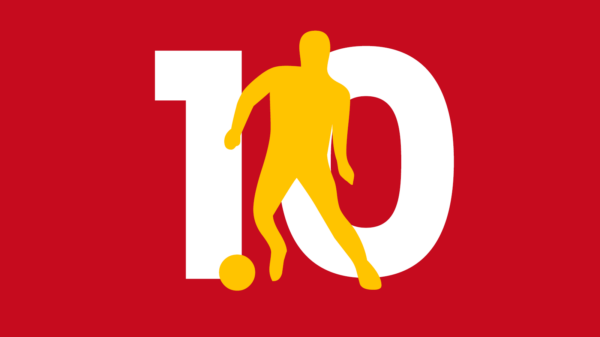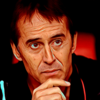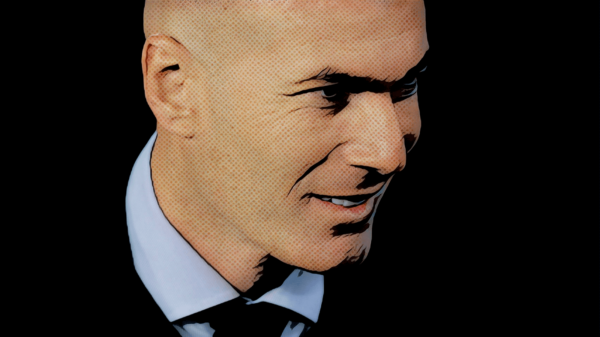
If the San Siro in Milan is called the graveyard of European football, the Bernabeu under Florentino Perez has become the graveyard for some of Europe’s top managers. They all came here to bring the European Cup to the Spanish capital, and for a little more than a decade now they have failed to do so. The latest addition to Florentino Perez’s exit list is Jose Mourinho, who undoubtedly was ‘the man’ expected to restore some pride into the Los Blancos side.
The Mourinho Days
A manager who fashions himself as the Special One and who holds an enviable record for not having finished a single year in his career without a major trophy, was allowed to leave Real Madrid after failing to live up to the demands of the most high-profile job in club football. And all this finally boils down to Mourinho’s tactics.
Jose Mourinho is a man who is known for fielding teams built around a certain footballing philosophy that needs the defense to be the spine of his team and on the defensive abilities of the players in front of the back-line. In contrast to his long-proven formula for success, Real Madrid possess a plethora of attacking talent not necessarily known for their defensive mentality.
First at Porto, then at Chelsea and finally at Inter. Mourinho’s team fielded a solid back-line which effectively nullified the greatest of their attacking opponents. At Chelsea, Mourinho had the likes of the mighty John Terry, Ricardo Carvalho and Ashley Cole to hold the fort for him, while at Inter, he found allies in the legendary Javier Zanetti and Brazilian right back, Maicon, along with the likes of Walter Samuel, Lucio and Christian Chivu.
At Chelsea, his cause was supplemented by the presence of the midfield geniuses of Claude Makelele, Michael Essien and Frank Lampard who did more than enough to support the teams defensive requirements, while at Inter Javier Zanetti was often deployed beside Esteban Cambiasso to reign in attacks and act as a first line of defense against counter attacks.

Madrid’s formation in the La Liga winning season. (Made using the Tactics Creator App, click here to create your own.)
While the harmonious affair with his own strategy continued till Inter, the La Liga was to be a completely different kettle of fish. The La Liga’s high tempo game meant his unique style of defensive play would find no takers and this was not helped by Real Madrid’s insistence on playing attractive football.
Mourinho’s first change to his own tactics was to build a team that was capable of splitting open defenses. His attack was mainly based on two high-profile wingers, one of whom was expected to track back in defense while the other was allowed to operate upfront with full liberty. In sharp contrast to his others teams, Mourinho’s side also had a typical Brazilian attacking full-back in Marcelo. Though he had similar players in Ashley Cole and Maicon at his previous clubs, Marcelo can only be branded as a poor copy of Cole and Maicon. This coupled with the fact that Real Madrid played a high line of defense meant that Bernabeu never saw a side that was typically Mourinho-esque all the way.
In Mourinho’s La Liga winning season, Barcelona were a side in a sort of recovery after having captured two European crowns and successive La Liga titles, coupled with injuries to key players at various junctions through out the season. While some credit must be afforded to Mourinho for fielding a league winning team, the truth remains that Madrid never came across a team in Spain or in Europe, that would play effective high tempo football while shutting out their opponents completely.
In the season that just went by, Madrid met their worthiest rivals in the likes of a resurgent Barcelona in the domestic league and Borussia Dortmund in Europe. Klopp’s boy’s in yellow and black were far too strong a force for Mourinho’s men in white to reckon with. An injury to Essein and with Arbeloa suspended meant Madrid had some major blows to their plans before the tie. Dortmund’s tempo and precision caught Madrid off-balance and exploited the chinks in their papered up defense and killed the mighty team from the Spanish capital in the semi-finals, for the third time in succession.
In his La Liga winning season, Mourinho managed to salvage some pride by assuring that even the Special One could succeed with a strategy that was not his forte. Blame it on dumb luck or the sheer brilliance of his opponents in Europe, he was deprived off a third European crown at Madrid.
What could Carletto do?
To replace Jose Mourinho would have been a Herculean task for any manager as seen at Chelsea and Inter, but things are different in Madrid. Mourinho for the first time in his career has left a club with a bitter taste in the mouths of fans and players alike. Perez’s appointment of a personality like Carlo Ancelotti is a clear indicator of the presidents plans for the clubs.
Carlo is certainly not a stop gap arrangement until another top coach is available to take up the reins at the Bernabeu. If Mourinho couldn’t succeed, it is unlikely that anyone in his class could do the same. This being said, Carlo Ancelotti is no push over as a coach and boasts of an equally excellent resume, having won the league in every country he has coached in, while also leading AC Milan to two European Cups.
But Ancelotti’s mindset varies much from that of Mourinho’s. The Italian maestro is far more adaptable to change as compared to the Portuguese. From his initial years at Parma to his last assignment in PSG, Ancelotti’s sides have been varied and he has shifted tactics to encompass the club’s traditional values while also adjusting to the requirements of the current situation. The other thing that puts them apart is Ancelotti’s affable nature. While Mourinho was at loggerheads with owners and players during his tenure at Chelsea and Madrid, Carletto as he is known for this very reason, can bring about a calming effect to the club, effectively managing to keep the club’s troubles away from the pitch for the ninety minutes of the game.
Tactically, Ancelotti may be inclined towards a 4-3-2-1, but has often shown a certain liking to shift to a 4-4-2, which was the trademark of his days under Ariggo Sacchi at Milan. But from lessons learnt at Parma, wherein he played a disgruntled Gianfranco Zola on the left wing and missed out on the chance to sign Roberto Baggio, who signed for Bologna instead of competing for a spot with Hernan Crespo and Enrico Chiesa upfront. Zola eventually left for Chelsea too.
At Juventus, he masterminded the deployment of French legend, Zinedine Zidane by dropping him in the space behind the two strikers upfront, in a 3-4-1-2 formation. At Milan, his intention of using a 4-3-2-1 was hampered by Silvio Berlusconi’s insistence on playing two strikers instead of one.
At Chelsea, he played a midfield diamond with Frank Lampard, but effectively shifted to a varying form of 4-3-2-1 and 4-3-3, when Lampard’s presence seemed to be nullified when the ball was played behind him. During his tenure at PSG, he was able to stick to his own strategy when he found the perfect lone marksman in Zlatan Ibrahimovic. With the Swede in front, Nene, Menez, Lavezzi, Pastore and Lucas thrived around the frontman’s scoring and play making abilities.
In the case of Real Madrid, Ancelotti might not bring in more reinforcements to supplement the current crop of attacking players but certain spots need reinforcements and in all likeliness, Isco and Asier Illarramendi might be headed to Real Madrid. While the former is now almost a certainty, the Illarramendi who has often drawn parallels to Xabi Alonso could move to the Bernabeu this summer to be deployed in that very role alongside Sami Khedira. Other names that might be on Perez’s gift basket to Ancelotti are Borussia Dortmund’s Ilkay Gundogan, Gareth Bale from Tottenham and returning right-back Daniel Carvajal, who was brought back after being exiled to Germany. The rise of Raphael Varane means Madrid are pretty much settled in their back-line too.

Positions in Madrid’s 4-2-3-1, that Ancelotti might alter with new signings. (Made using the Tactics Creator App, click here to create your own.)
The 4-2-3-1 might return with Benzema being the sole out and out center forward currently present at the Bernabeu, with Gonzalo Higuain on the verge of signing for Arsenal or Juventus. While Alvaro Morata is likely to deputize effectively for Benzema in lesser fixtures, it is likely that Ancelotti might hand in a request for another proven striker. But with Isco’s presence in the squad, the formation might see a shift to a 4-2-3-1, with Benzema up front, while freeing up Ronaldo and Ozil relatively. If brought in, Gundogan could control the tempo of things from a deep midfield role alongside Xabi Alonso or Sami Khedira.
While maintaining a high tempo game up front with 4-creative forwards, Ancelotti will balance the affair with the presence of two fully matured attacking full-backs in Daniel Carvajal and Marcelo.
An alternate theory would be the deployment of a diamond midfield, which Ancelotti preferred during his days at Milan, especially in 2003. A 4-1-2-1-2 formation, with Khedira and Modric playing in roles akin to those of Gennaro Gattuso and Andrea Pirlo, with Isco and Ozil being positioned akin to Clarence Seedorf and Rui Costa respectively. A midfield heavy formation has always been Carletto’s signature style and has brought him success at Milan and Chelsea.
Apart from being an adaptable and affable trainer, Ancelotti is known for his man management skills and will effectively look to cool down Madrid veterans, Iker Casillas and Sergio Ramos who were badly dealt with by Jose Mourinho during his entire tenure. Ancelotti may not come across the political types, but he does carry a certain aura around him, which has caused high-tension players to respect his presence. Ancelotti comes to the La Liga at a time when tactics and strategy are everything to Spanish football. Ancelotti is a man who learnt his trade during the golden days of the Serie A, when Italian football was known for its heavy dependence on tactics and management, over superhero players.
Hence, all-in-all, I think that Madrid and Carlo Ancelotti are a match made in heaven, and even with the likes of Jurgen Klopp and Jupp Heynckes being available for employment, Perez’s decision to cough up a little more for Ancelotti will not be in vain.
Also a writer at The Rational Pie, Sportskeeda and The Football Story.
- Everton on the wane: Unwrapping the problems at Goodison Park - March 19, 2015
- How do Netherlands & Argentina’s key players compare statistically? - July 9, 2014
- 3 Key Questions | Netherlands vs Costa Rica: World Cup quarter-final - July 5, 2014


























































